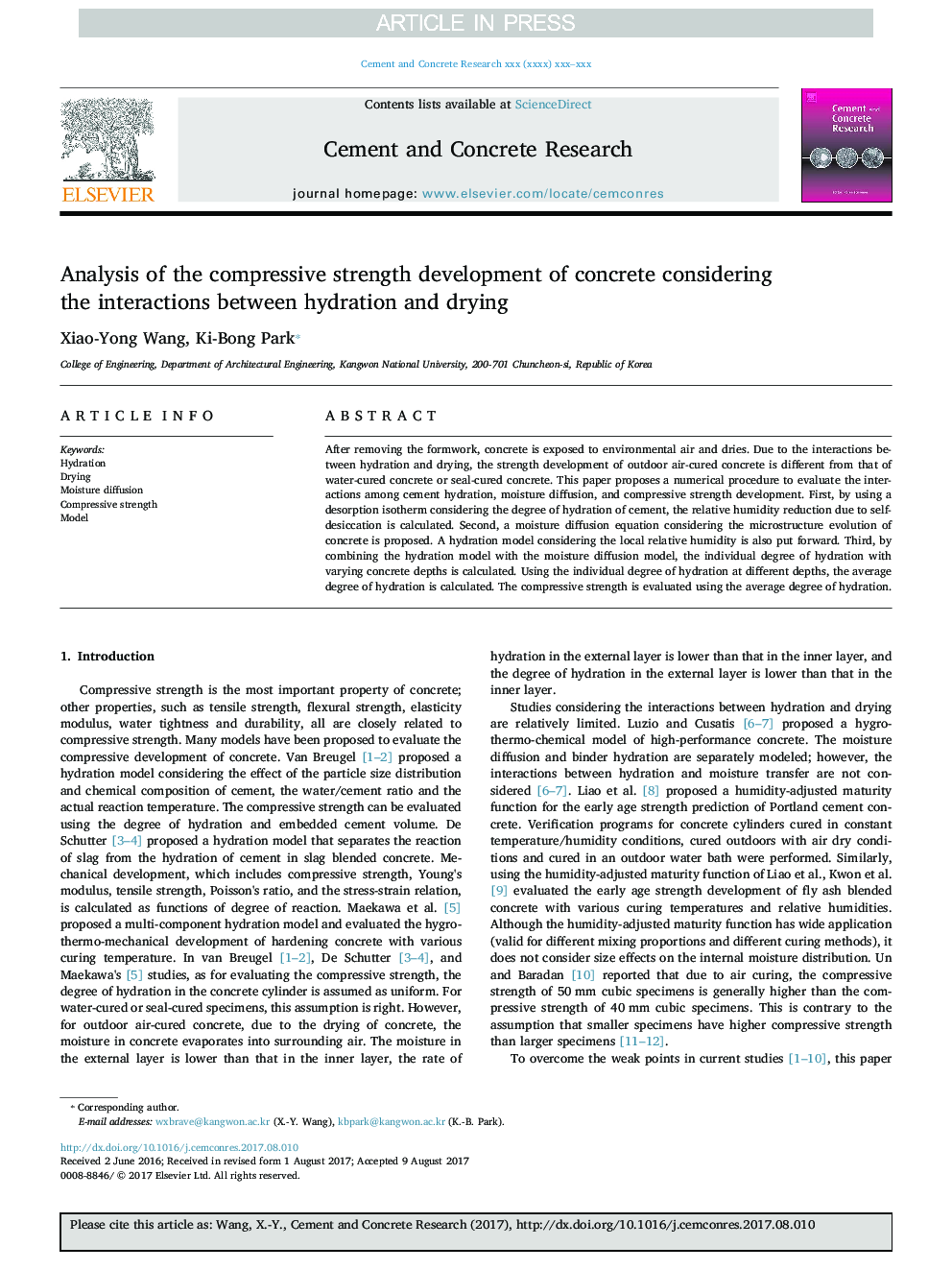| کد مقاله | کد نشریه | سال انتشار | مقاله انگلیسی | نسخه تمام متن |
|---|---|---|---|---|
| 7884912 | 1509721 | 2017 | 15 صفحه PDF | دانلود رایگان |
عنوان انگلیسی مقاله ISI
Analysis of the compressive strength development of concrete considering the interactions between hydration and drying
ترجمه فارسی عنوان
تجزیه و تحلیل استحکام بتن بر اساس بتن با در نظر گرفتن تعامل بین هیدراتاسیون و خشک شدن
دانلود مقاله + سفارش ترجمه
دانلود مقاله ISI انگلیسی
رایگان برای ایرانیان
کلمات کلیدی
هیدراتاسیون، خشک کردن، انتشار رطوبت، استحکام فشاری، مدل،
ترجمه چکیده
پس از برداشتن قالب، بتن در معرض هوا محیطی قرار می گیرد و خشک می شود. با توجه به تعاملات بین هیدراتاسیون و خشک شدن، توسعه قدرت بتن های هوادهی در فضای باز از بتن های ضد آب یا بتونه مقاوم در برابر آب متفاوت است. این مقاله یک روش عددی برای ارزیابی تعاملات بین هیدراتاسیون سیمان، انتشار رطوبت و توسعه مقاومت فشاری ارائه می دهد. اول، با استفاده از یک ایزوترم تخلیه با توجه به درجه هیدراتاسیون سیمان، کاهش رطوبت نسبی به دلیل خودسوزی محاسبه می شود. دوم، معادله انتشار رطوبت با توجه به تکامل میکروارگانیسم بتن پیشنهاد شده است. مدل هیدراتاسیون با توجه به رطوبت نسبی محلی نیز مطرح شده است. سوم، با ترکیب مدل هیدراتاسیون با مدل انتشار رطوبت، درجه انطباق هیدراتاسیون با عمق بتن های مختلف محاسبه می شود. با استفاده از درجه انحصاری هیدراتاسیون در عمق مختلف، درجه متوسط هیدراتاسیون محاسبه می شود. استحکام فشاری با استفاده از درجه متوسط هیدراتاسیون ارزیابی می شود.
موضوعات مرتبط
مهندسی و علوم پایه
سایر رشته های مهندسی
مهندسی صنعتی و تولید
چکیده انگلیسی
After removing the formwork, concrete is exposed to environmental air and dries. Due to the interactions between hydration and drying, the strength development of outdoor air-cured concrete is different from that of water-cured concrete or seal-cured concrete. This paper proposes a numerical procedure to evaluate the interactions among cement hydration, moisture diffusion, and compressive strength development. First, by using a desorption isotherm considering the degree of hydration of cement, the relative humidity reduction due to self-desiccation is calculated. Second, a moisture diffusion equation considering the microstructure evolution of concrete is proposed. A hydration model considering the local relative humidity is also put forward. Third, by combining the hydration model with the moisture diffusion model, the individual degree of hydration with varying concrete depths is calculated. Using the individual degree of hydration at different depths, the average degree of hydration is calculated. The compressive strength is evaluated using the average degree of hydration.
ناشر
Database: Elsevier - ScienceDirect (ساینس دایرکت)
Journal: Cement and Concrete Research - Volume 102, December 2017, Pages 1-15
Journal: Cement and Concrete Research - Volume 102, December 2017, Pages 1-15
نویسندگان
Xiao-Yong Wang, Ki-Bong Park,
